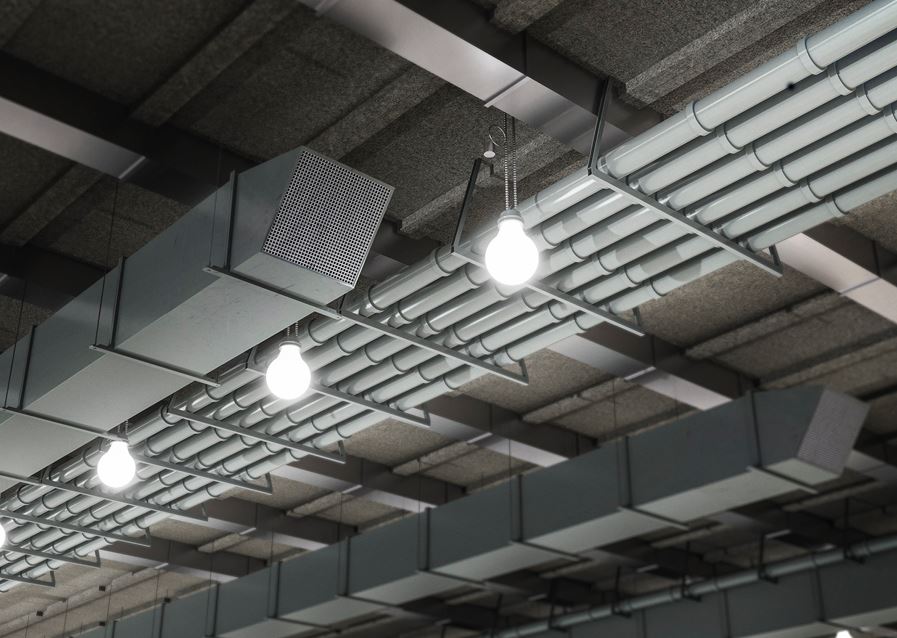
Shraddha Badoni, senior project co-ordinator and architectural technologist at Pick Everard, explores the techniques to improve infection control through better design of healthcare facilities – focusing on key elements including ventilation and patient flow.
Since the pandemic, it would be impossible to deny the existence of a new approach to infection control. The NHS estate was challenged to the ultimate test, leaving the lessons learnt and newfound priorities to continue influencing decision-makers today and into the future. Some of those decision makers include construction leads, architects, health and safety designers, and mechanical and electrical engineering specialists. And the physical design of a hospital continues to evolve in response to the demands of the medical world. This is being seen in both new hospitals that are exceeding current healthcare standards, and older hospitals that are being retrofitted, refurbished, or renovated. However, while some of the design choices are clear to the naked eye, and can be easily retrospectively added, there are others that are less obvious and require careful consideration. But they all play a role in minimising the risk of infection transmission and maintaining more-efficient healthcare estates.
PATIENT FLOW
Understanding the way people interact with their environment is a critical design consideration in each and every project and impacts spatial planning to a huge extent. In the health sector, each building, its patients, its visitors, and its staff, have a tailored journey from entry to exit and spatial standards can be improved through creative modelling. Our work with hospitals could not be complete without thorough consultation and engagement sessions, which help us understand exactly how different facilities are used and the architectural limitations to consider. Ways to control patient flow, with infection control in mind, include limiting the number of entrances and providing adequate social distancing space in waiting areas, corridors, hallways, and stairways. The ultimate goal is to maintain a predictable flow in order to make other design decisions, such as the location of hand sanitisers and associated facilities, more effective.
VENTILATION
Enhanced ventilation, whether natural or mechanical, can effectively decrease cross infection risk of airborne pathogens. Variance in air pressure and distribution is critical and it is essential to consult ventilation engineers early in the design process to determine the air flow pattern required, without causing discomfort to occupants or affecting the function of the department the system is serving. For example, an infectious disease isolation room requires an air pressure of minus five pascals, whereas a critical care area requires an air pressure of 10 pascals, so ventilation designs must always be co-ordinated with the designs of other disciplines, notably architects and structural engineers. For positive air pressure regimes, advising the architect of maximum air leakage rates from an operating theatre will inform their design of wall linings, lobby locations, pressure stabilisers, and air transfer passages. Advising a structural engineer early of
plant loadings and locations will also inform their design, and this is especially important on refurbishments where the location of proposed plant may have constraints due to the existing strength and structure of the building. Ventilation designs are rigorously reviewed by teams of experts prior to issue and construction. Then, at the construction stage, the installation and system performances are validated with numerous tests and exercises to demonstrate the design intent has been achieved. Once in operation, the ventilation considerations do not stop, though, and it is important to monitor the resilience of systems so any faults with equipment can be prevented.

SHAPES AND SIZES
All spaces and rooms in a healthcare facility must be carefully considered to minimise the chance of infection spreading. Minimal inside corners, with rounded solid surfaces, ensure cleaning can be completed more thoroughly. And horizontal surfaces, such as ledges and shelves, are being reduced as part of new design best practice to help prevent the build-up of bacteria.
MATERIALS
Materials used in healthcare facilities must comply with the appropriate hygiene performance rating and include easy-toclean surfaces. This covers everything found inside a space, from handrails to furniture, and is reinforced by technical standards and guidance found in the NHS’s Health Building Notes. Antimicrobial materials are ideal for healthcare environments as they prevent micro-organisms from growing on surfaces. There is value in material flexibility, too, so look at removable privacy curtains, for example, as these can be replaced more easily and cleaned offsite if required. Though some materials are better than others, the key is to ensure that spaces are managed through a thorough long-term cleaning strategy.



TACTILE FEATURES
Possibly the biggest change since the pandemic is the reduction in the need for physical touchpoints, a benefit for both patients and hospital staff. No-touch technology, like motion sensors, are delivering significant improvements in risk reduction, while building patient and staff confidence, through touchless doors, lights, taps, and hand dryers. Conversely, high-touch surfaces like enclosed cabinetry are being dispensed in favour of no-touch alternatives. Staff hand-held devices create concerns about cross contamination and are being increasingly kept away from patient surfaces, such as overbed tables. And we are seeing designated ‘staff-only’ stations, provided in accessible locations, to store equipment safely and make obvious to cleaners which surfaces run greater risk of containment accumulation.
HAND HYGIENE
Regular handwashing is recognised as a key practise to control infection and reduce contamination. Where possible, individual handwashing stations are being provided in patient rooms, general wards, and all clinical rooms. To make this effort common behaviour, extra attention is directed to distinct visualcues that enhance desired behaviours. The stations should then be designed to accommodate recommended handwashing procedures, including features such aslong-arm taps that enable elbows to be used to operate water flow. Handwash sinks are also being positioned away from staff work zones to prevent splash and cross-contamination, while examination gloves, alcohol-based sanitisers, and bins are placed in easily-accessible positions when entering and exiting patient rooms.
CHALLENGING THE NORM
As humans, we continue to evolve, and our healthcare facilities must continue to meet our needs. While some modern innovations and ways of thinking are born out of unexpected events, like the pandemic, we must all continue to invest time and resource into healthcare betterment, trialling different healthcare designs that have the potential to improve the experience of patients and staff alike.